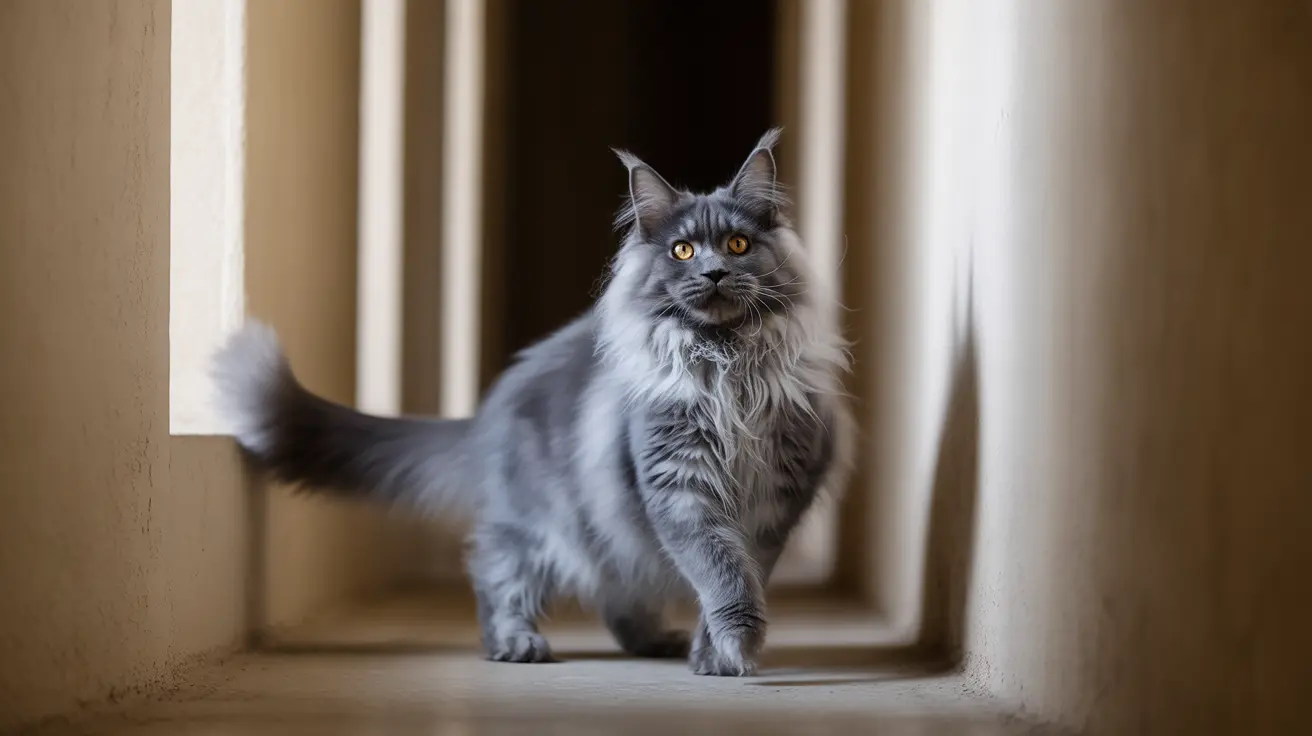Introducing a scared cat to a dog requires patience, understanding, and a well-planned approach. Whether you're bringing a new cat into a home with an existing dog or vice versa, the key to success lies in creating a positive, stress-free environment for both animals. This comprehensive guide will walk you through the essential steps to ensure a smooth introduction process.
A careful introduction not only prevents potential conflicts but also sets the foundation for a lasting friendship between your pets. By following these expert-backed strategies, you can help your scared cat feel secure while teaching your dog appropriate behavior around their feline companion.
Creating a Safe Environment for Initial Introductions
Before any face-to-face meetings occur, it's crucial to establish a secure space for your cat. Set up a separate room with all essential amenities: litter box, food, water, comfortable bedding, and hiding spots. This room should be completely off-limits to your dog, allowing your cat to feel safe and gradually adjust to the new environment.
Install baby gates or screen doors at strategic locations throughout your home. These barriers will be invaluable during the visual introduction phase, allowing both pets to see each other while maintaining physical separation.
Managing the Scent Exchange Process
Begin the introduction by allowing both pets to become familiar with each other's scents. Swap bedding between your cat and dog, or exchange towels that have been gently rubbed on each pet. This helps both animals associate each other's scent with their safe spaces and daily routines.
Place food bowls on opposite sides of a closed door to create positive associations with each other's presence. This technique helps both pets link good experiences (eating) with the other animal's scent.
Controlled Visual Introductions
Once both pets seem comfortable with the scent exchange, progress to visual introductions using a baby gate or screen door. Keep the dog on a leash during these sessions and maintain a safe distance. Reward both pets for calm behavior - treats for the dog when they remain relaxed, and special rewards for the cat when they show curiosity without fear.
Keep these sessions brief initially, gradually increasing duration as both pets display comfort and positive reactions. Watch for signs of stress in either animal and be prepared to end the session if needed.
Face-to-Face Meetings with Safety Measures
When both pets consistently show calm behavior during visual introductions, begin supervised face-to-face meetings. Keep your dog on a leash and ensure your cat has multiple escape routes. Never force interaction - let your cat approach the dog on their own terms.
Maintain control of these meetings by using positive reinforcement for both pets. Reward your dog for calm, non-reactive behavior, and praise your cat for brave approaches and neutral responses.
Signs of Progress and Moving Forward
Look for positive indicators such as:
- Relaxed body language in both pets
- Decreased hiding behavior from the cat
- The dog showing less fixation on the cat
- Comfortable coexistence during supervised sessions
Progress to longer interactions only when both pets consistently demonstrate these positive behaviors. Continue supervision even as they become more comfortable with each other.
Frequently Asked Questions
How do I introduce a scared cat to a dog safely to avoid stress and aggression?
Create a safe room for the cat, start with scent exchanges, progress to visual introductions through barriers, and finally conduct supervised face-to-face meetings with the dog on leash. Never force interactions and always move at the cat's pace.
What are the best treats to use for positive reinforcement during cat-dog introductions?
Use high-value treats that each pet particularly enjoys. For cats, try small pieces of cooked chicken or commercial cat treats. For dogs, use special treats reserved only for these introduction sessions to maintain their value.
Why is it important to keep a dog on a leash when introducing it to a cat?
A leash provides crucial control over the dog's movements, preventing chase behaviors and allowing you to maintain safe distances. This control helps build trust and ensures the cat's safety during introductions.
How can I tell if my cat is stressed during dog introductions, and what should I do?
Watch for signs like flattened ears, dilated pupils, hissing, growling, or hiding. If you notice these stress signals, immediately increase distance between the pets and return to the previous successful step in the introduction process.
What are the signs that a cat and dog are ready for unsupervised interactions after introduction?
Look for consistent relaxed body language, peaceful coexistence during supervised sessions, respect for each other's space, and no signs of predatory behavior from the dog or fear from the cat over several weeks of interactions.
Remember, successful introductions between cats and dogs often take weeks or even months. Stay patient and consistent with your approach, and always prioritize the safety and comfort of both pets throughout the process.






